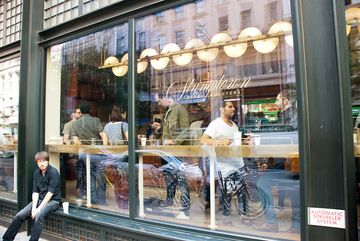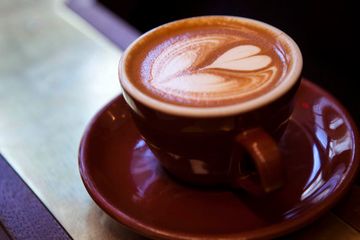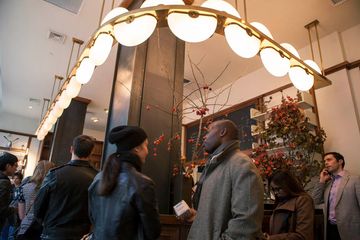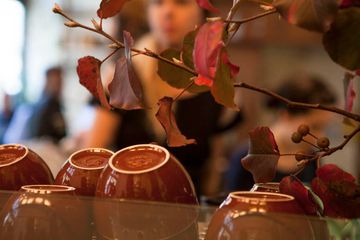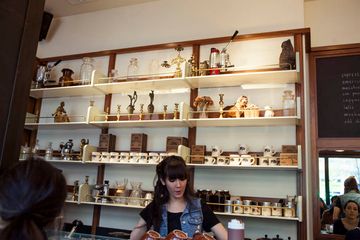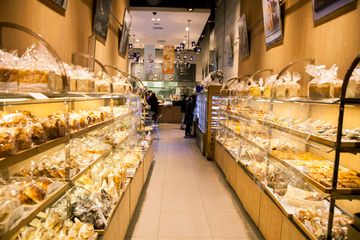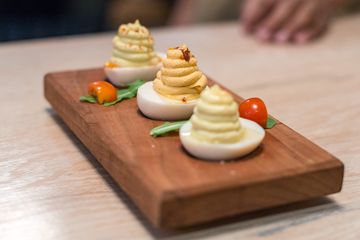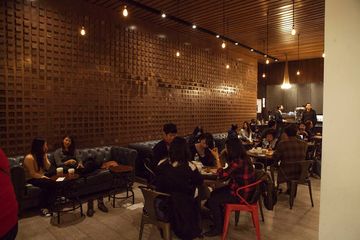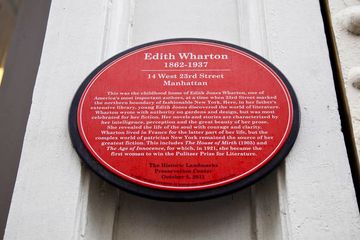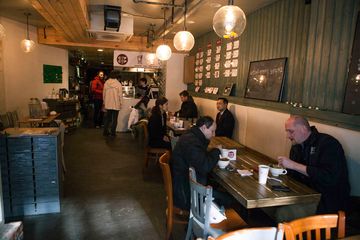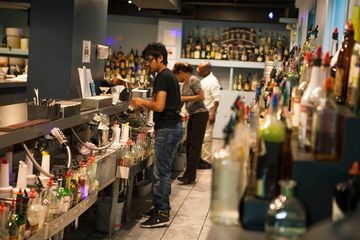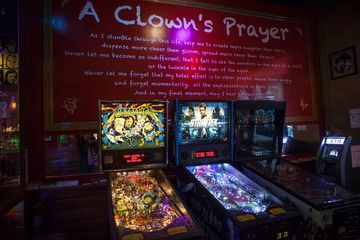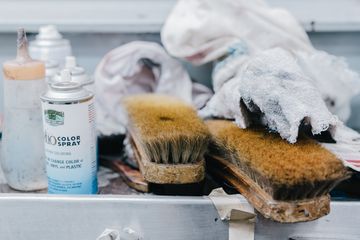Nestled among the charming area that is Korea Town, is an eatery with a dual-personality. By day, the business exists as Cup & Cup, an artsy cafe that serves affordable fusion lunch dishes, artistically inserted into giant teacups, and smooth, rich coffee. At night, the same area morphs into Take 31, a dimly lit lounge area, with live music, succulent dinner dishes and a cool, hip vibe. The menu is made of classic Korean dishes with a twist. The dishes are inspired by Japanese, Italian and Mexican cuisine and cater to vegetarians, meat-lovers and those in between. South Korean owner, Kihyun Lee, studied fashion design at the prestigious Fashion Institute of Technology (FIT) in NYC, and merged his love of authentic Asian food and passion for modern art into each dish. He revived this space in 2011 with the help of his friends. On our afternoon visit, we tried their classic bowl artfully filled with mushrooms, minced beef, rice, chopped egg and carrotsCup & Cup, its daytime persona, was introduced a year and a half after opening Take31. The airy rooms feel clean, with minimal lines. The shelves along the walls are carefully decorated with quirky, vintage memorabilia, but do not feel cluttered. A table with an ice-water cooler is stationed in the middle, for easy access. One statement wall is entirely dedicated to a blueprint of the space, delicately and organically painted by the architects at work. While much of the design is fresh, brightly colored Lego pieces are playfully juxtaposed throughout. Some of those Lego pieces are even inserted within the wall's low-hanging light fixtures and plastered near the giant window at the entrance. During the day, Cup & Cup offers patrons with a few hours dedicated to "Study Time, " as business professionals and students quietly sip green tea lattes and munch on noodles, while using the Wi-Fi connection. At night, locals flock in when the sun goes down, as dinner, drinks and music serves a different, yet equally, artsy crowd.

